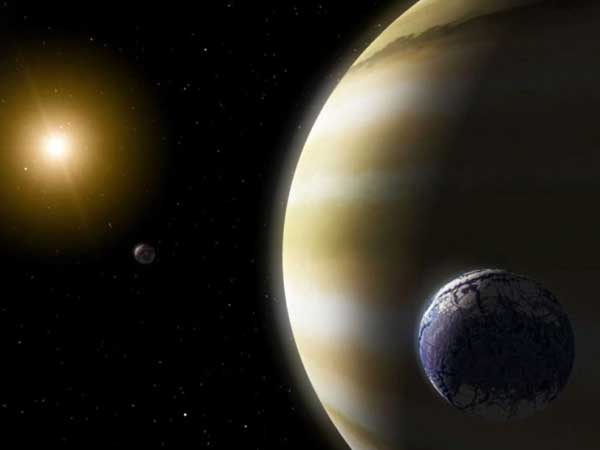
First known 'exomoon' discovered around 8,000 light years from Earth
Washington, Oct 5: Astronomers may have found compelling evidence for the existence of the first known moon, 'exomoon,' outside our solar system. Astronomers say the mysterious space object belongs to the exoplanet Kepler-1625b, and say it's a whopping 8,000 light years from Earth. The discovery was made using Hubble and Kepler space telescopes.

What is an Exomoon?
An exomoon or extrasolar moon is a natural satellite that orbits an exoplanet or other non-stellar extrasolar body. It is inferred from the empirical study of natural satellites in the Solar System that they are likely to be common elements of planetary systems. The majority of detected exoplanets are giant planets. An exomoon, also known as an extrasolar moon, is a natural satellite that orbits a planet - just like Earth's own Moon. The key difference is that an exomoon lives outside our solar system, orbiting an exoplanet.

How did the astronomers discover exomoon?
In search of exomoons, astronomers at Columbia University in New York analysed data from 284 Kepler-discovered planets that were in comparatively wide orbits, with periods greater than 30 days, around their host star. The observations measured the momentary dimming of starlight as a planet passed in front of its star, called a transit. The researchers found one instance, in Kepler 1625b, that had intriguing anomalies.
Also Read |Planet 'Nine' playing hide-and-seek, and its hiding right beyond Neptune

About Kepler-1625b exomoon - can it support alien life?
The moon is 8,000 light-years from Earth, and is located in the Cygnus constellation. It's estimated to be 1.5% the mass of its companion planet - which itself is estimated to be several times the mass of Jupiter. It's a similar mass ratio to the Earth and Moon, supporting the theory that this object is a moon itself. Scientists believe the exomoon is roughly the size of Neptune, which is far bigger than any moon in our own solar system. The current theory is that Kepler-1625b's satellite is a gaseous moon, rather than being rocky like our own Moon. Importantly, researchers say that the exomoon and its host planet lie within their star's habitable zone. This means the temperatures are moderate enough to allow for the existence of liquid water on solid surfaces. Sadly, it's very likely that both the exomoon and exoplanet are made from gas - and therefore unable to support life, at least as we know it.


 Click it and Unblock the Notifications
Click it and Unblock the Notifications

































